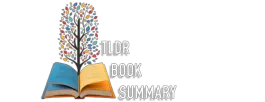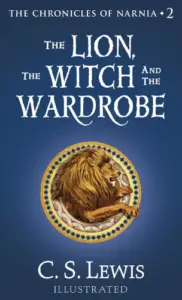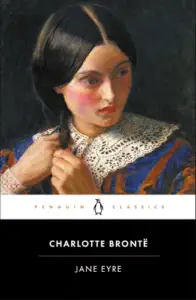Lord of the Flies
Book Author: William Golding
Summary reviewed by:
Terrence Timmons
Terrence Timmons
Analyst
Bachelor of Arts (BA), University Of California, Santa Barbara 2019
With over 4 years of experience as an analyst. Terrence Timmons is committed to analyzing summaries without compromising on quality.
Lord of the Flies: Summary
What happens when civilization’s thin veneer shatters? Lord of the Flies by William Golding plunges readers into the harrowing world of a deserted island, where a group of boys—stranded after a plane crash—struggles to survive without adult guidance. Set against the unforgiving backdrop of the island, the story unfolds as an exploration of humanity's darkest instincts. With no societal norms to constrain them, the boys’ initial attempts at order quickly descend into chaos and brutality.
The group is led by Ralph, who strives to maintain order through rules and the signal fire, hoping for rescue. His leadership is challenged by Jack, whose lust for power and thirst for control lead to the formation of a rival faction obsessed with hunting and savagery. The struggle between Ralph’s desire for civilization and Jack’s descent into primal instincts mirrors the tension between the fragile structures of society and the lurking chaos beneath.
As the boys’ society fractures, symbols like the conch shell and the “Lord of the Flies” take on deeper meanings, representing the collapse of law and the rise of savagery. The novel's tension escalates as fear of an imagined "beast" drives the boys to unspeakable acts, revealing the latent darkness within all humans. Lord of the Flies is a chilling portrayal of the inherent violence and savagery that lies beneath the surface of civilization, raising profound questions about the nature of humanity.
Spoilers (watch a short ad to reveal spoilers)
Lord of the Flies: Genres
Fiction
Literature and Fiction
Allegory
Psychological Fiction
Adventure
Dystopian
Lord of the Flies: Main Characters
Ralph: The elected leader of the boys, Ralph values order and civilization. He consistently pushes for the maintenance of the signal fire, believing it will lead to their rescue. His sense of responsibility and moral integrity are tested as he struggles to hold the group together amidst rising chaos.
Jack Merridew: Initially the head of the choirboys, Jack embodies the descent into savagery. He values power and control, ultimately leading a faction that prioritizes hunting and primal instincts over rescue. His aggressive nature and disregard for rules reveal his preference for dominance and violence.
Piggy: The intellectual and rational boy, Piggy values logic and reason. His attachment to the conch symbolizes his belief in democratic order and civility. Piggy’s insight is crucial, but his physical weakness and social status often undermine his contributions, leading to his tragic downfall.
Simon: A sensitive and introspective boy, Simon represents innate goodness and spiritual insight. He values compassion and truth, evidenced by his solitary encounters with nature and his realization about the “beast” being a projection of the boys’ fears. His tragic death underscores the group’s complete loss of innocence.
Roger: Roger, who starts as a quiet boy, slowly reveals a sadistic streak as the boys descend into savagery. He values cruelty and enjoys the power he gains from inflicting pain. His actions, like the brutal killing of Piggy, showcase the extreme violence that arises when societal restraints vanish.
Lord of the Flies: Themes
Civilization vs. Savagery: The novel explores the tension between the human impulse to maintain civilization and the equally strong drive toward savagery. Ralph’s struggle to keep order contrasts with Jack’s embrace of violence, illustrating the fragility of societal norms.
Loss of Innocence: The boys’ transformation from civilized children to violent savages highlights the loss of innocence. As they succumb to their darker instincts, the innocence they had at the beginning of the story is irrevocably lost, symbolized by the deaths of Simon and Piggy.
The Nature of Evil: Golding delves into the inherent evil within humanity. The “Lord of the Flies” represents this dark force, suggesting that the capacity for cruelty and destruction exists within everyone, brought to the surface in the absence of societal constraints.
The Power and Flaws of Leadership: Leadership is portrayed as a double-edged sword in the novel. Ralph’s democratic approach contrasts with Jack’s authoritarian rule, highlighting both the strengths and vulnerabilities of different leadership styles. The novel questions the effectiveness of leadership when those being led abandon the principles of society.
Fear and Its Effects: Fear plays a critical role in driving the boys toward irrational and violent behavior. The imagined “beast” becomes a powerful symbol of the unknown and the boys’ internal fears, leading them to commit atrocities as they seek to eliminate the perceived threat.
Lord of the Flies: What You Need to Know
(Contains Spoilers: Perfect for readers seeking a quick review.)
Lord of the Flies follows a group of British boys stranded on a deserted island after a plane crash, with no adults to guide them. They initially attempt to establish a civilized society, electing Ralph as their leader and setting up a signal fire to attract rescue. Ralph, supported by Piggy, emphasizes the importance of order, rules, and the fire. The conch shell becomes a symbol of authority and governance.
However, the group’s cohesion quickly begins to fracture as Jack Merridew, who leads the choirboys-turned-hunters, challenges Ralph's leadership. Jack’s obsession with hunting and his growing thirst for power lead him to break away from Ralph’s group, forming his own tribe focused on primal instincts and savagery. This division marks the beginning of the group’s descent into chaos.
As tensions escalate, the boys become increasingly paranoid about a mysterious "beast" they believe inhabits the island. This fear, compounded by their isolation and the absence of societal rules, drives them further into madness. Simon, who represents a moral compass, discovers that the "beast" is actually a dead paratrooper, not a supernatural creature. Tragically, when Simon tries to reveal the truth, he is mistaken for the beast during a frenzied ritual and is brutally killed by the other boys.
Jack’s tribe fully embraces savagery, painting their faces and engaging in ritualistic dances. They steal Piggy’s glasses to create fire, which signifies their complete rejection of Ralph’s attempts at maintaining order. The conch, once a symbol of authority, is shattered when Roger kills Piggy by rolling a boulder onto him, signifying the total collapse of the society they had tried to build.
In the climax, Ralph becomes the hunted, fleeing for his life from Jack’s tribe, who have turned completely feral. The island is set ablaze in their attempt to kill Ralph. However, this destructive act inadvertently signals a passing naval ship, leading to their rescue. When the naval officer arrives, the boys are confronted with the horror of their actions. The officer’s presence starkly contrasts the savagery that has overtaken them, forcing them to confront the loss of their innocence and the darkness that has consumed them.
Lord of the Flies: Methodology
Our summary of Lord of the Flies draws from a deep understanding of the themes of civilization versus savagery, the loss of innocence, and the nature of evil, ensuring every detail remains true to William Golding’s intent. By focusing on key moments and character dynamics, we deliver an insightful overview that resonates with the underlying tension and darkness in the story. Our commitment to quality and integrity ensures an accurate and engaging narrative that captures the essence of this classic novel while providing a valuable resource for readers.


Lord of the Flies
Date Published: September 17, 1954
Disclaimer: As an Amazon Associate I earn from qualifying purchases.




